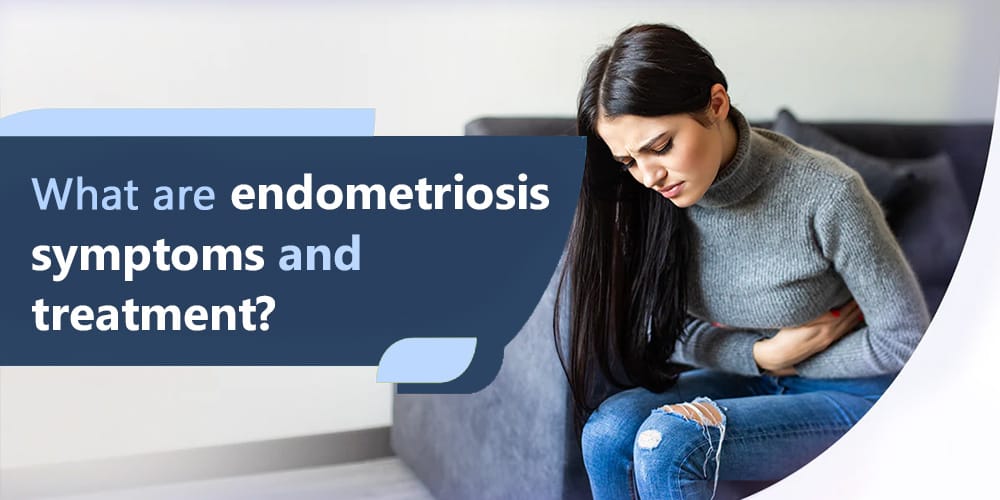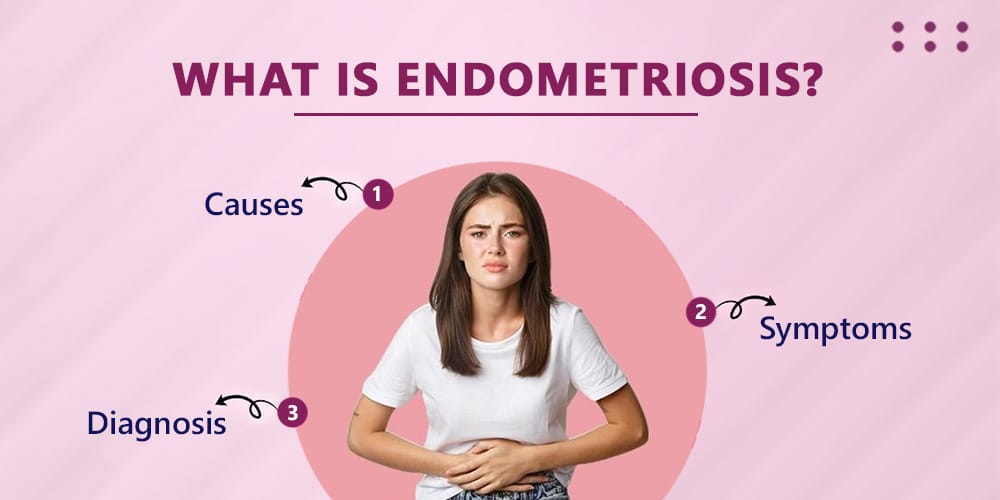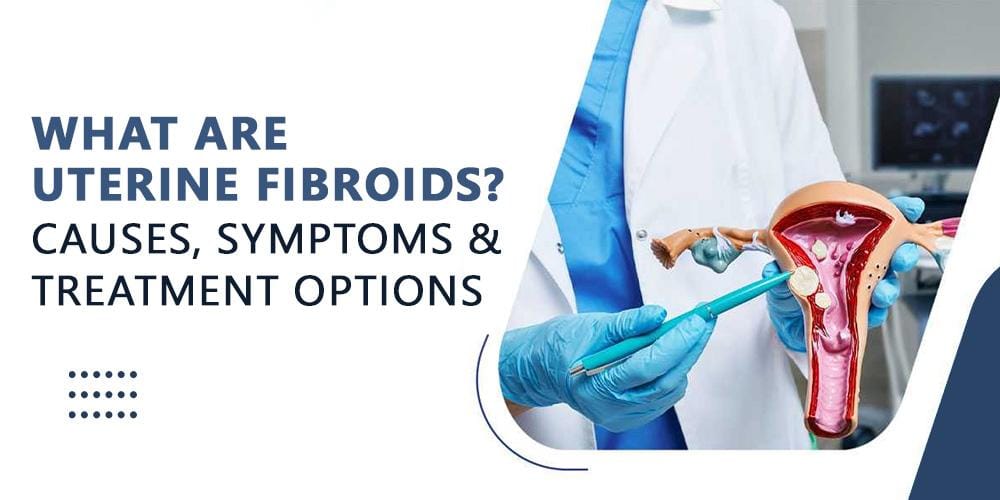Women have been told for too long that severe pelvic pain, debilitating cramps, and chronic exhaustion are “just normal.” You might have been in pain for years, which made you miss work, skip social events, and feel like no one cared. We want to make it clear from the start that that level of pain is not normal and you deserve to be heard.
Endometriosis is a common but complicated condition that needs specialized, expert care. This detailed guide gives you the information about what are endometriosis symptoms and treatment, and helps you learn about the latest endometriosis treatments. The average wait time for an endometriosis diagnosis is a terrible seven to ten years. Delay in endometriosis diagnosis can be devastating for many patients.
The Silent Invader: Understanding the Disease
To get a better idea of what is endometriosis, picture the tissue that normally lines the inside of your uterus, the endometrium. Now picture that same tissue growing outside your uterus and forming patches (implants) on your ovaries, fallopian tubes, bladder, bowel, and the lining of your pelvis.
Your monthly hormonal cycle has an effect on these implants. They get thicker and try to bleed like the lining of your uterus does. But this blood can’t get out, so it causes a lot of inflammation, swelling inside the body, and slow growth of scar tissue and adhesions that stick organs together. Chronic pelvic pain is caused by this constant internal scarring. Endometriosis isn’t just a problem with your periods; it’s a systemic inflammatory disease fed by your hormones.
Unraveling the Primary Endometriosis Causes
While the exact trigger remains a medical mystery, research does point to several strong theories that explain why these cells survive and thrive:
- The most accepted theory is retrograde menstruation, in which it is believed that menstrual blood containing endometrial cells flows backward through the fallopian tubes and implants in the pelvic cavity. The strong immune system usually clears these cells, but in women who develop the condition, the immune system fails.
- Inheritance: Generally, endometriosis is inherited. You are more likely to develop the condition if your mother or sister has it, as there is an underlying inherited risk of endometriosis.
- The implants in endometriosis are completely dependent on estrogen for their growth and activity, hence the exacerbation of symptoms during the reproductive years. This does not mean that estrogen dominance caused the disease but that it is its fuel, which drives the pain and progression.
- Immune System Dysfunction: The body’s defense mechanism, rather than destroying the rogue cells, contributes to the chronic inflammation that allows the implants to survive and cause pain.
Beyond Cramps: The 20 Symptoms of Endometriosis You Cannot Ignore
The symptoms of endometriosis make this disease so bad because they affect more than just the reproductive organs. When you think about your pain, look for this pattern of problems that come and go.
Signs and Symptoms of Endometriosis
| Category | Endometriosis Symptoms (Severe Indicators) | Patient Pain Point |
| Menstrual Pain (Dysmenorrhea) | 1. Crippling Period Pain: Pain that prevents you from working, studying, or leaving the house. | The feeling of being completely incapacitated for days every month. |
| 2. Pain Before/After Period: Cramps starting days beforebleeding and lingering days after it stops. | The inability to predict a single pain-free week. | |
| 3. Heavy, Prolonged Bleeding: Soaking through pads/tampons every hour; periods lasting longer than seven days. | Constant fatigue and anemia from blood loss. | |
| 4. Unusual Spotting: Bleeding or spotting between periods. | Uncertainty and anxiety about the cycle’s rhythm. | |
| Bowel & Bladder Function | 5. Painful Bowel Movements (Dyschezia): Severe, deep rectal pain, especially during your period. | Fear of using the restroom during menstruation. |
| 6. Cyclical Diarrhea/Constipation: Significant digestive changes that coincide with your cycle. | Being misdiagnosed with Irritable Bowel Syndrome (IBS) for years. | |
| 7. Painful Urination (Dysuria): Burning or sharp pain when passing urine, often mistaken for a chronic UTI. | Frustration when antibiotics fail to resolve symptoms. | |
| 8. Urinary Urgency/Frequency: Constantly feeling the need to urinate, especially during your period. | Sleep and daily routine disruption. | |
| Chronic & Systemic Pain | 9. Chronic Pelvic Pain: A constant, dull, non-menstrual ache in the pelvis or lower back. | The constant, exhausting knowledge that the pain is always there. |
| 10. Painful Intercourse (Deep Dyspareunia): Deep, jarring pain during or immediately after sex. | Damage to intimacy and relationship health. | |
| 11. Superficial Sex Pain: Pain felt at the vaginal entrance/vulva upon touch or initial penetration. | Avoiding physical intimacy altogether. | |
| 12. Cyclical Low Back Pain: Severe pain radiating specifically in the sacral/lower back area during menses. | Being treated solely by orthopedic specialists. | |
| 13. Cyclical Leg/Sciatic Pain: Pain radiating down the legs, often along the back of the thighs. | Being misdiagnosed with nerve or disc issues. | |
| Other Systemic Symptoms | 14. Profound Fatigue: Crushing, persistent exhaustion not relieved by sleep. | Feeling like you are “tranquilized” or constantly running on empty. |
| 15. Abdominal Bloating (Endo Belly): Severe, painful distention and bloating unrelated to diet. | Constant discomfort and feeling physically swollen. | |
| 16. Nausea/Vomiting: Cyclical nausea, often linked to pain flares during the period. | Loss of appetite and weight changes. | |
| 17. Infertility/Difficulty Conceiving: Unexplained difficulty getting pregnant. | Emotional distress and prolonged family planning challenges. | |
| 18. Pain during Ovulation (Mittelschmerz): Sharp, severe pain mid-cycle. | Disruption of the monthly cycle rhythm. | |
| 19. Immune/Allergy Issues: Reportedly higher incidence of allergies and immune issues. | General poor health and susceptibility to illness. | |
| 20. Cyclical Pain in Distant Sites: (Rare) Painful coughing or shortness of breath during the period (Thoracic Endometriosis). | Extreme worry due to severe, non-gynecological symptoms. |
These 20 symptoms of endometriosis show that the disease affects everything it comes into contact with, even the immune system and nerves. The cyclical pattern of symptoms is the most telling sign, but non-specialists often overlook it.
The Path to Validation: Seeking Definitive Endometriosis Diagnosis
Getting a clear diagnosis from an experienced specialist is the most important step in getting effective endometriosis treatments. You need to keep going because a blood test or simple scan can’t really tell if you have the disease.
The Problem with Imaging
- Transvaginal ultrasound and MRI: Are imaging tools that mostly find large cysts on the ovaries (endometriomas) or huge nodules of deep infiltrating endometriosis (DIE). Small, shallow implants are the most common and painful types of lesions, but they are often completely invisible on imaging. If you get a “clear” scan, it doesn’t mean you don’t have the disease. Patients need to ask for a specialist who knows about this problem.
The Gold Standard: Laparoscopy for Endometriosis
The only way to get a clear endometriosis diagnosis is through a minimally invasive surgery called diagnostic laparoscopy.
Visualization: A specialized surgeon puts a thin, lighted camera (laparoscope) through a small cut, which lets them see the pelvic and abdominal cavity directly.
Confirmation: The surgeon looks for the characteristic lesions, which can look like red, blue, or white spots on the organs. A biopsy is done to check the tissue under a microscope.
Treatment: The surgeon should cut out all visible disease right away during the same procedure, which is very important. This diagnosis and treatment at the same time is the best way to get relief.
Read our guide on how to choose a laparoscopic surgeon for complex gynecological issues.
Treatment Paths: Relief and Long-Term Management
You might be one of those people who need to know “how to cure endometriosis”, but the truth is that there is no known cure right now. But we do have very effective endometriosis treatments that get rid of the disease, ease the pain, and improve quality of life. The best way to do things is always multimodal and tailored to the person.
1. Medical Management: Hormonal Suppression Therapy
Hormones are often the first thing that works. By lowering estrogen levels, these treatments hope to make the disease unable to grow:
Continuous Birth Control: Taking combination pills all the time stops the menstrual cycle, which stops the bleeding and inflammation that happens every month, which makes the pain less.
Progestin therapies: These drugs help thin the lining and stop the growth of endometrial implants.
GnRH Agonists and Antagonists: These strong drugs temporarily put the body into a menopause-like state, cutting off estrogen to the implants. This is only for very bad cases and must be closely watched because of possible side effects.
These treatments can help with pain, but it’s important to remember that they only mask the symptoms; they don’t cure the problem. When the medicine is stopped, the disease may come back.
Read the World Health Organization (WHO) factsheet on endometriosis, which says there is no known cure but lists effective ways to manage the condition..
2. Surgical Management: The Excision Difference
If a woman has moderate to severe pain and the disease has caused scarring or cysts, surgery to remove the cysts is the best option. This is the most important part of endometriosis treatments.
You need to know the difference between excision and ablation. Excision means cutting out the whole depth of the lesion with care. When you ablate something, you only burn the surface.
Ablation leaves the disease’s roots behind, which means that it comes back much more often and causes more pain. Ask for a surgeon who does laparoscopic excision surgery to make sure the disease is completely gone.
Keeping Fertility: Endometriosis excision surgery can greatly increase fertility rates by getting rid of the inflammation and any scar tissue that is blocking the fallopian tubes or ovaries. Getting rid of the disease gives you a fresh start for getting pregnant.
Read the guidelines on how to use surgery to treat infertility caused by endometriosis.
3. Integrated Pain Management
When you have chronic pelvic pain, you may need more than just gynecological care. A full approach includes:
Physiotherapy for the pelvic floor: Inflammation from endometriosis often makes the pelvic floor muscles tight and painful. Specialized physiotherapy can help these muscles relax, which can help a lot with deep pain and painful sex (deep dyspareunia).
Changes to the diet: Cutting back on foods that cause inflammation, like red meat, sugar, and highly processed foods, and eating more foods that fight inflammation, like turmeric, Omega-3s, and leafy greens, can help keep inflammation in check over time.
Go through research conducted by the National Institutes of Health (NIH) regarding the advantages of anti-inflammatory diets for chronic pelvic pain disorders.
Quick Takeaways
- Validation: Severe period pain that stops your life is not normal. Endometriosis symptoms extend beyond the cycle.
- Diagnosis: Imaging frequently yields inconclusive results. Laparoscopy for endometriosis is the only way to get a clear endometriosis diagnosis.
- The Best Way to Help: The best endometriosis treatments are laparoscopic excision surgery to get rid of the disease and hormonal therapy to ease symptoms.
- Pain Points: Be on the lookout for painful sex (deep dyspareunia), bowel problems that come and go, and extreme fatigue that never goes away.
- Recurrence: There is no known cure, so long-term management requires constant monitoring and a commitment to anti-inflammatory lifestyle habits.
Conclusion and Call to Action
You have a right to feel pain, and there is a way to get better. When you choose an expert specialist, the long, frustrating process of getting a clear diagnosis for your endometriosis symptoms and treatment is over. Don’t accept simple pill prescriptions or procedures that don’t go deep enough. Ask for laparoscopic excision surgery from a doctor who knows a lot about systemic inflammatory disease and is dedicated to getting rid of all signs of the implant.
Do the final thing today. Talk to a gynecological surgeon who has done a lot of endometriosis excision surgery to get the answers and relief you need.
Explore the criteria for selecting the best gynecological surgeon in your area.
Frequently Asked Questions (FAQs)
1. Can a blood test or ultrasound confirm an endometriosis diagnosis?
No. An ultrasound may find big endometrioma cysts, and blood tests can look for signs of inflammation, but neither can definitely say that someone has endometriosis. The only way to get a clear endometriosis diagnosis and start effective endometriosis treatments via laparoscopy for endometriosis is to look inside the body with a laparoscopy.
2. If I have endometriosis symptoms like severe pain, does that mean I cannot have children?
Not always. Endometriosis is one of the main reasons women can’t get pregnant, but many women with endometriosis symptoms do get pregnant naturally. Laparoscopic excision surgery to remove scar tissue and an inflamed environment has also been shown to greatly increase the chances of natural conception and the success rates of fertility treatments.
3. Are endometriosis treatments like hormonal pills a permanent solution?
No, hormonal pills used for endometriosis treatments (like continuous birth control) are not cures; they just make the symptoms less severe. They stop the monthly bleeding and swelling, which makes the pain less, but they don’t get rid of the endometrial implants that are already there. When you stop taking the medicine, the signs and symptoms of endometriosis usually come back.
4. What is the difference between simple pain and the crippling period pain that indicates endometriosis?
Over-the-counter pain relievers can help with mild pain, and it doesn’t stop you from doing normal things. Endometriosis symptoms cause severe period pain that makes people miss work or school. They often throw up or faint, and they start days before the period. This is a sign of systemic inflammatory disease, not just normal cramps.
5. Why is the delay in endometriosis diagnosis so long?
The delay in endometriosis diagnosis is because the endometriosis symptoms are often similar to those of other common conditions, such as IBS, and many doctors don’t realize how bad chronic pelvic pain can be. Most significantly, the small, pain-causing lesions are often invisible on imaging, leading doctors to dismiss patient complaints when scans appear “normal.”






